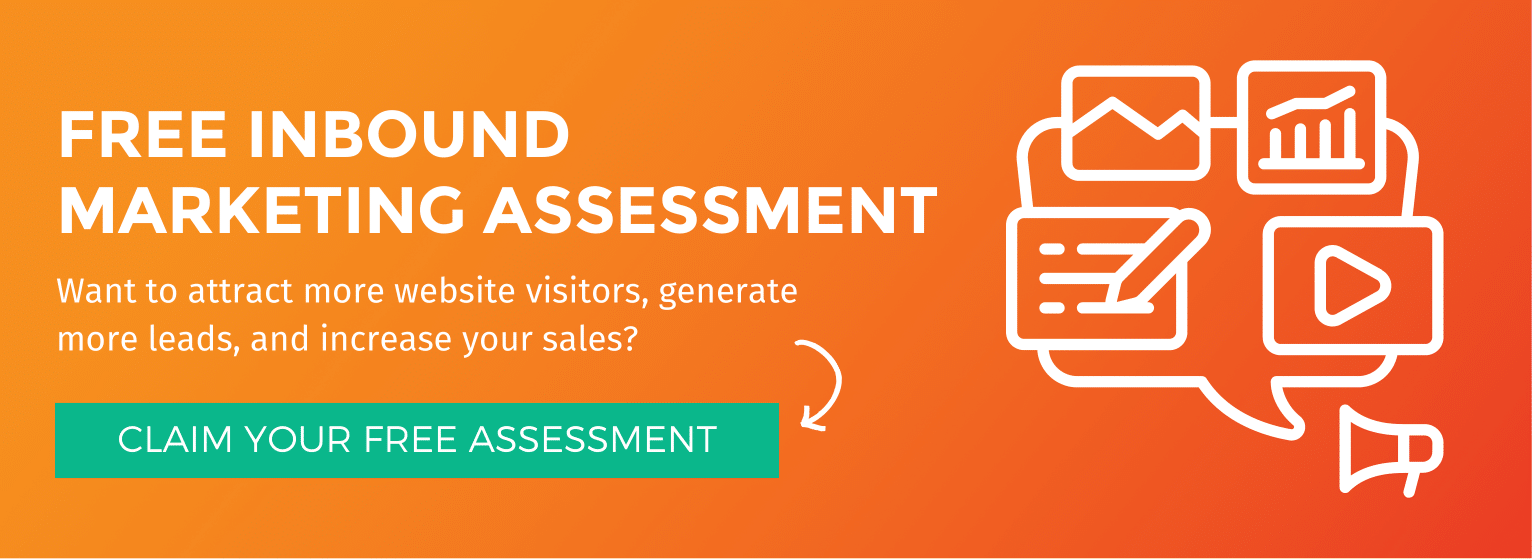Growth to Exit: Driving Sales with Effective Long Term Marketing
by Leanne Mordue on 02-May-2024 14:31:00
 In an economy where quick wins and short-term marketing strategies often steal the spotlight, a more patient and longer-term strategy is necessary for business owners with an eye on the long-term prize – in this case, growing and developing your business as part of an exit strategy.
In an economy where quick wins and short-term marketing strategies often steal the spotlight, a more patient and longer-term strategy is necessary for business owners with an eye on the long-term prize – in this case, growing and developing your business as part of an exit strategy.
The journey from growth to exit is not a sprint; it’s more like a marathon that requires foresight, endurance, and a well-crafted marketing strategy with the resilience and strength to deliver consistent results in varying economic conditions. In this article, we’ll look at the essence of building a 10 year plus marketing and growth strategy as part of a successful long-term exit strategy.
The Foundation – Building A Market Strategy Around Your Long-Term Vision
For most business owners and entrepreneurs, a well-planned exit strategy is central to their dream of building a successful company. Whether the long-term goal is to sell the business profitably, pass it on to new management, or transition into a new role, the exit process is a significant milestone in your career that requires careful planning.
However, the groundwork for this momentous step is best prepared years in advance, in order to develop value in your business to maximise the value of any sale. A common approach to pre-exit growth is ‘binge sales’ in the two years or so prior to selling the business, amplifying investment in marketing and sales so as to build the business order book is quickly and strongly as possible.
Unfortunately, a flurry of new customers is no indication of the long-term growth potential of a company, and most canny buyers will see through this ruse. Ultimately, if your business has the capacity to grow in the final two years, then you lose nothing by investing in growth now. Spending money on sustainable and consistent growth in the 10+ years before your planned exit is the best way of demonstrating the market viability and value of your business model.
Marketing For Sustainable Growth
The great thing about digital marketing as a growth tool is that it can be used for both an immediate sales boost and lead generation, getting new customers through the door, and longer-term growth strategies, centred on customer retention and brand extension. This is because marketing is not simply a tool for promotion – with the right approach, it can also become a fundamental driver for business development, customer engagement, and market positioning that directly impacts your business’s value and attractiveness at the point of exit.
Sustainable growth entails building a sustainable competitive advantage in your niche.
This will involve identifying and capitalising on your unique selling propositions as a business, and conveying these effectively to your target audience. This goes beyond short-term promotions and sales messages, and seeks to strengthen your brand identity through consistent messaging, brand positioning, and storytelling over time. By differentiating your business in this way, it will be easier for you to attract and retain customers over the long term, with a higher average customer lifetime value, and a lower acquisition cost for both new leads and customers.
Innovating And Adapting To Market Changes
The only constant in business is change: markets evolve, customer preferences shift, and new technologies emerge. However, many business owners approach marketing as if their business and the economy they move in are going to remain the same. When investing in long-term growth, this is a mistake. Businesses that regularly adjust and update their marketing strategies in response to market feedback and trends, as well as their own successes and mistakes, are better positioned to maintain relevance and competitiveness over the long haul. Regularly review your product offers, the marketing channels you use, and your customer engagement practices to ensure that your company remains at the forefront of your industry, making it more attractive when the time comes to sell.
Balancing Short-Term Wins With Long-Term Goals
Short-term profitability and long-term consistency are not mutually exclusive goals. Both are important. By building your digital inbound marketing strategy around both your current and future priorities, you’ll gain the flexibility to meet your immediate goals while steadfastly investing in long-term marketing capital to secure your future. This dual approach helps secure a steady revenue stream when you need it, now, while also building the foundations for a lucrative exit.
Next Steps
To find out more about the role that marketing plays in long-term growth and exit planning, please get in touch with one of our specialists today by clicking here.
Image Source: Canva- Inbound Marketing (SEO, PPC, Social Media, Video) (824)
- Strategy (363)
- Sales & CRM (195)
- Marketing Automation & Email Marketing (190)
- Business Growth (164)
- Website Design (160)
- Hubspot (138)
- Lead Generation (115)
- Google Adwords (98)
- Content Marketing (94)
- Conversion (48)
- Case Studies (47)
- News (47)
- Ecommerce (39)
- Webinars (34)
- SEO (24)
- AI (20)
- Events (19)
- Video (17)
- LinkedIn Advertising (15)
- Video Selling (15)
- Software training (13)
- Niche business marketing (11)
- The Digital Prosperity Podcast (10)
- Facebook Advertising (6)
- HubSpot Case Studies (5)
- December 2025 (10)
- November 2025 (6)
- October 2025 (17)
- September 2025 (16)
- August 2025 (14)
- July 2025 (14)
- June 2025 (5)
- May 2025 (19)
- April 2025 (15)
- March 2025 (13)
- February 2025 (13)
- January 2025 (8)
- December 2024 (2)
- November 2024 (4)
- October 2024 (21)
- September 2024 (4)
- August 2024 (8)
- July 2024 (14)
- June 2024 (16)
- May 2024 (25)
- April 2024 (15)
- March 2024 (18)
- February 2024 (5)
- January 2024 (10)
- December 2023 (6)
- November 2023 (10)
- October 2023 (13)
- September 2023 (12)
- August 2023 (14)
- July 2023 (13)
- June 2023 (14)
- May 2023 (15)
- April 2023 (13)
- March 2023 (14)
- February 2023 (13)
- January 2023 (15)
- December 2022 (13)
- November 2022 (6)
- October 2022 (8)
- September 2022 (22)
- August 2022 (15)
- July 2022 (13)
- June 2022 (16)
- May 2022 (14)
- April 2022 (16)
- March 2022 (17)
- February 2022 (11)
- January 2022 (8)
- December 2021 (6)
- November 2021 (7)
- October 2021 (11)
- September 2021 (10)
- August 2021 (7)
- July 2021 (7)
- June 2021 (4)
- May 2021 (4)
- April 2021 (1)
- March 2021 (3)
- February 2021 (5)
- January 2021 (4)
- December 2020 (7)
- November 2020 (6)
- October 2020 (5)
- September 2020 (9)
- August 2020 (18)
- July 2020 (17)
- June 2020 (17)
- May 2020 (10)
- April 2020 (21)
- March 2020 (24)
- February 2020 (21)
- January 2020 (12)
- December 2019 (23)
- November 2019 (12)
- October 2019 (14)
- September 2019 (16)
- August 2019 (15)
- July 2019 (13)
- June 2019 (6)
- May 2019 (8)
- April 2019 (4)
- March 2019 (2)
- February 2019 (2)
- January 2019 (2)
- December 2018 (3)
- November 2018 (24)
- September 2018 (11)
- August 2018 (9)
- June 2018 (3)
- May 2018 (6)
- April 2018 (14)
- March 2018 (12)
- February 2018 (16)
- January 2018 (15)
- December 2017 (15)
- November 2017 (18)
- October 2017 (23)
- September 2017 (19)
- August 2017 (28)
- July 2017 (27)
- June 2017 (25)
- May 2017 (18)
- April 2017 (17)
- March 2017 (16)
- February 2017 (17)
- January 2017 (14)
- December 2016 (21)
- November 2016 (27)
- October 2016 (25)
- September 2016 (16)
- August 2016 (20)
- July 2016 (19)
- June 2016 (14)
- May 2016 (20)
- April 2016 (24)
- March 2016 (22)
- February 2016 (28)
- January 2016 (27)
- December 2015 (28)
- November 2015 (19)
- October 2015 (9)
- September 2015 (12)
- August 2015 (5)
- July 2015 (1)
- June 2015 (10)
- May 2015 (3)
- April 2015 (11)
- March 2015 (14)
- February 2015 (15)
- January 2015 (12)
- December 2014 (2)
- November 2014 (23)
- October 2014 (2)
- September 2014 (2)
- August 2014 (2)
- July 2014 (2)
- June 2014 (7)
- May 2014 (14)
- April 2014 (14)
- March 2014 (7)
- February 2014 (2)
- January 2014 (7)
- December 2013 (9)
- November 2013 (14)
- October 2013 (17)
- September 2013 (3)
- August 2013 (6)
- July 2013 (8)
- June 2013 (4)
- May 2013 (3)
- April 2013 (6)
- March 2013 (6)
- February 2013 (7)
- January 2013 (5)
- December 2012 (3)
- November 2012 (2)
- September 2012 (1)
Subscribe by email
You May Also Like
These Related Blogs

Which Lead Generation Strategies Should You Use?
Online lead generation encompasses a wide range of tactics, campaigns, and strategies, so businesses approaching digital marketing for the first time …

6 Benefits of a Business Exit Strategy
A business exit strategy is a plan for how you, as a business owner, aim to disengage from your business – whether to retire or move on to other thing …

5 Steps To Successful Selling
To expand, and even to survive, every SME has to become comfortable with selling their services. According to the Office for National Statistics (ONS) …




